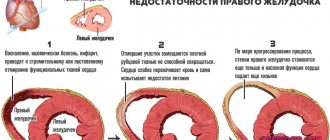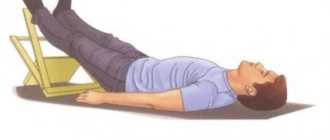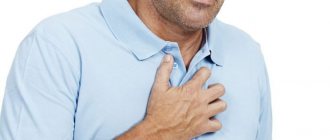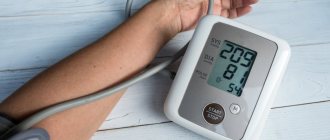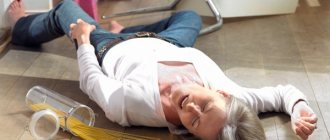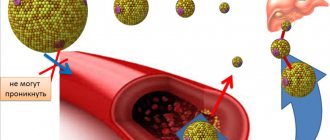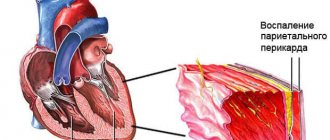Arterial hypertension is a condition characterized by a persistent increase in blood pressure and subsequent damage to target organs (brain, kidneys, heart muscle).
The increase in pressure is due to vasoconstriction (compression of the vessel wall), which contributes to the typical clinical picture.
With high blood pressure, the patient complains of chills, headaches, deterioration in health and decreased performance.
With high blood pressure, the whole body can often shake (what is this connected with, why does it occur, and how to help a person in this situation, later in the article).
What is the relationship between chills and blood pressure
What is chills? This is a person’s feeling of cold, which is caused by spasm of blood vessels. This condition is accompanied by muscle tremors.
It occurs predominantly in the masticatory muscles, but can affect the muscles of the upper and lower extremities, back, and lumbar region.
Patients suffering from arterial hypertension often have similar complaints and manifestations of the disease. However, nonspecific symptoms (eg, chills) are also common.
Why does a person shake with high blood pressure? The causes of chills include a number of factors that are the main links in the development of high blood pressure.
As you know, hypertension is accompanied by vascular spasm, starting from small capillaries and ending with arteries, which ultimately leads to the fact that a person perceives cold in this way.
This is also due to reduced blood perfusion in tissues and organs and explains why a person shakes at high blood pressure.
Stressful situations
Stress is present in the lives of all of us, but all people react to it differently. This largely depends on the person’s character and temperament.
People who are highly sensitive to current events are more likely to experience episodes of high blood pressure.
This tendency is due to the release of catecholamines into the bloodstream in stressful situations, which promote vasospasm and increase blood pressure. Chills in such a situation are formed reflexively due to increased vascular tone.
Prevention of chills in this case consists of minimizing stressful situations both at work and at home.
VSD
Vegetative-vascular dystonia is a condition characterized by a complex of symptoms caused by dysfunction of the nervous and humoral regulation of the functioning of internal organs.
Autonomic disorders are characterized by the appearance of a whole complex of symptoms. Among them, such signs as paresthesia in the extremities, decreased performance, and autonomic disorders of internal organs and systems often appear.
Why does a patient shake with neurocirculatory dystonia, and what is this connected with? The appearance of chills with this symptom complex may be due to the development of a vegetative crisis.
This condition is a manifestation of the cardiac form of VSD and is characterized by a sharp increase in blood pressure, which is accompanied by increased heart rate, increased sweating, interruptions in heart function, chills, shortness of breath and a feeling of fear of death.
One of the manifestations of VSD is panic attacks. These are anxiety attacks that are accompanied by a feeling of fear and vegetative symptoms.
The clinical picture of panic attacks is characterized by a rapid pulse, tremors, internal trembling, a feeling of lack of air, chills, dizziness, fear of unexpected death, a feeling of numbness in the limbs, and high blood pressure.
High blood pressure
A pressure that does not exceed 139 to 89 mm Hg is considered normal.
Arterial hypertension is diagnosed when the pressure rises more than 140 to 90 mmHg. inclusive. Depending on blood pressure values, several degrees and stages of hypertension are distinguished.
This condition can be asymptomatic for a long time (especially in young people) and requires careful diagnosis.
The first symptoms of hypertension may appear with a sharp rise in blood pressure. The patient will complain of headache, excessive sweating, internal trembling of the whole body, chills and a feeling of interruptions in the heart's function due to high blood pressure.
Low pressure
We figured out why it shakes at high pressure. But what explains chills with low blood pressure?
Arterial hypotension is characterized by a decrease in blood pressure by more than 20% of initial values.
A serious condition is considered to be acute arterial hypotension, which occurs due to cardiac dysfunction, large blood losses and leads to impaired circulation throughout the body.
Symptoms of hypotension include weakness, decreased performance, apathy, pale skin, dizziness and headaches. Also, with low blood pressure, fainting and trembling throughout the body are often observed.
A person's body type largely determines the range of diseases that he may suffer from.
For example, people with an asthenic body type are characterized by arterial hypotension, cold extremities, chills, and a tingling sensation in the lower extremities.
Hypertensive crisis
Hypertensive crisis is a condition that occurs when blood pressure increases and requires emergency medical care. It is characterized by cases of damage to target organs (brain, kidneys) and some other complications.
The crisis is characterized by a violation of vascular regulation, which leads to spasm of the vascular wall and, as a consequence, hypertension - an increase in the frequency of contractions of the heart muscle.
Since vasoconstriction leads to a hypoxic state in many organs, this causes the occurrence of ischemic processes. Why does a person shake when there is suddenly high blood pressure?
Lack of oxygen (and, as a result, poor circulation) can cause such patients to “shake” during periods of high blood pressure.
Chills with high blood pressure: why does it shake with hypertension?
Have you been struggling with HYPERTENSION for many years without success?
Head of the Institute: “You will be amazed at how easy it is to cure hypertension by taking it every day.
With high blood pressure, the patient constantly complains of a rapid heartbeat, a feeling of burning heat, noise and ringing in the ears. As the symptoms increase, the patient begins to suffer from chills and shakes, as if he had a high temperature.
When hypertension occurs, a spasm occurs in the muscles of the skin and blood vessels. A patient with high blood pressure suddenly becomes very cold, trembling spreads throughout the body. First of all, the masticatory muscles of the facial joint are affected, and then the whole body shakes.
In an absolutely healthy person, chills occur when exposed to cold, which is a normal natural reaction of the body. If a person is easily excitable, trembling in the body will be the result of severe stress and fear.
Why does trembling occur?
Chills are a clear symptom of serious problems in the human body. It is always accompanied by weakness, malaise, and a constant desire to rest and lie down. There are several reasons for this condition, the most common of which should be noted:
- hypothermia;
- infection;
- stress;
- increased blood pressure;
- vegetative-vascular dystonia.
Moreover, the last 3 points are closely related to each other. Under stress or nervous tension, blood pressure can rapidly increase even without a history of cardiovascular disease. To normalize the condition, it is useful to drink several tablets of Valerian extract, a sour decoction of berries, tea with lemon or herbal tea. Infusions of blackberries and black currants will help cope with chills perfectly.
The manifestation of chills often occurs in people with vegetative-vascular dystonia, which is explained by a lack of heat due to circulatory disorders. Such patients almost always have cold hands and feet, which is caused by a violation of natural vascular tone.
A contrast shower, a hot bath or a trip to the sauna will help get rid of chills. Gradual systematic hardening of the body will be no less effective. To quickly remove toxic substances that are formed during stress, as well as to get rid of chills, it is recommended to use a decoction of lingonberry leaves.
In people who suffer from sudden changes in blood pressure, chills may be a symptom of the onset of a hypertensive crisis. Wherein:
- the condition of blood vessels changes;
- blood circulation is impaired.
As soon as the pressure decreases, the person stops shaking.
In some cases, chills occur with Rhine disease, when vascular spasms occur. In this situation, a Botox injection will help get rid of the symptom. You will definitely need to give up smoking and alcoholic beverages.
Our readers successfully use ReCardio to treat hypertension. Seeing how popular this product is, we decided to bring it to your attention. Read more here...
In approximately 10% of cases, chills against the background of high blood pressure become a sign of another serious disease, for example, damage to the kidneys or thyroid gland.
Three degrees of hypertension
High blood pressure is characteristic of hypertension. Pathology is usually divided into 3 degrees, depending on the tonometer readings:
- first degree – 140-159/90-99;
- second degree – 160-179/100-109;
- third degree – over 180/110 mm. rt. Art.
At the first stage, hypertension does not manifest itself in any way, except for periodic headaches, constant overwork and excessive irritability.
With so-called mild hypertension, chills and internal heat practically do not overcome the patient. These symptoms occur only in the second and third stages of the disease, when the pressure exceeds 160/100 mm. rt. Art. However, it often happens that the patient begins to shake even at lower blood pressure.
The main danger of hypertension is that, if uncontrolled, the pressure increases more and more. The patient runs the risk of ruptured blood vessels, cerebral hemorrhage, and stroke.
When there is no adequate treatment, high blood pressure negatively affects the entire body:
- atherosclerosis of blood vessels and aorta develops rapidly;
- there is a pronounced formation of plaques on the walls of the arteries;
- The lumen of blood vessels decreases, their compaction occurs;
- There is a violation of microcirculation in vital organs.
The response to increased resistance of hard vessels is accelerated work of the heart muscle, left ventricular hypertrophy, impaired diastolic relaxation of the myocardium, circulatory disorders, and arrhythmia. If one of the arteries becomes completely blocked, the heart will stop receiving blood and a myocardial infarction will develop.
The most common cause of the development of the disease is narrowing of arterioles - small branches of arteries. The heart is forced to pump blood with maximum effort to cope with the situation and overcome the constriction.
In about a third of hypertensive patients, chills will be a sign of a vegetative crisis, which is also called panic attacks. The reason for this condition:
- activation of the stimulating department of the autonomic nervous system;
- active production of adrenaline by the adrenal glands.
Other signs will be: increased headaches, pounding in the temples, tingling in the heart. With high blood pressure, the patient lacks air, legs and arms become numb, the urge to urinate becomes more frequent, and sometimes the body temperature may rise slightly.
This condition does not pose a direct threat to life, but the patient is haunted by indescribable excitement and panic.
How to reduce blood pressure
It is possible that high blood pressure does not go away, but chills increase. This situation requires immediately calling an ambulance. Before the doctors arrive, it is necessary to put the hypertensive patient to bed or help him take a comfortable body position.
This will prevent attacks of suffocation and calm the patient. It doesn't hurt to open a window in the room to provide fresh air.
If your heart begins to hurt, a Validol tablet under the tongue and a Corvalol solution for pressure are indicated. Next, it is very important to warm the patient’s feet, for example, put on warm socks, put a heating pad under the feet. You can speed up blood flow to your feet with moderately hot foot baths. It is allowed to add a small amount of mustard powder to the water.
Alternatively, you can use another popular method:
- moisten a towel with apple cider vinegar;
- spread it on the floor, covering it with a layer of polyethylene;
- place your heels on the towel.
It has been verified that after just 10 minutes the pressure, and with it the chills, go away.
And one more recommendation for such problems is to never panic! Normally, blood pressure decreases gradually, usually by 25-30 mm. rt. Art. at one o'clock. If the patient is not nervous, his condition will return to normal much faster.
When the cause of chills is a panic attack, it is recommended to take a No-shpa tablet, 30-40 drops of Valocordin. Additionally, you can close your eyes and massage your eyeballs for 1 minute. Soon the heartbeat should normalize and the chills should subside.
Unfortunately, you can suffer from high blood pressure for many years and not even know it. Very few people associate periodic migraines, especially pain in the occipital region, fatigue and poor health with the onset of hypertension. The following symptoms are often written off:
- to banal overwork at work;
- to poor working conditions and fuss.
Blood pressure is a very misleading number because several factors can affect its level. Pressure readings will always be slightly lower if the patient is resting and sleeping. But after fast walking, running or lifting heavy objects, it will certainly increase by several points. A specialist will tell you in the video in this article how to properly protect yourself from pressure.
Other causes of chills
High blood pressure is not the only and far from the main cause of chills. The most common include the following:
- Hypothermia in a person (this is called hypothermia) during the cold season.
- In this situation, the role of chills is protective and adaptive mechanisms that allow a person not to freeze.
- Neurological diseases.
- Hormonal disorders (diabetes mellitus, impaired synthesis of thyroid hormones).
- Infectious processes accompanied by hyperthermia.
- Regardless of the severity, fever is caused by intoxication of the body. Such diseases most often include viral processes (ARVI, influenza and parainfluenza), bacterial infections (meningitis, pneumonia, pyelonephritis).
- Traumatic injuries.
Chills are characterized by the fact that the process of heat production begins to prevail over the process of heat transfer. This leads to an increase in body temperature. It is important to note that body tremors due to hypertension and other causes have different origins and pathogenesis.
Causes of trembling
Chills with blood pressure are observed both in patients with low and high blood pressure levels. It is worth noting that, in addition to chills, tremor of the fingers, trembling of the hands and general weakness are often noted. This disorder is caused by a change in blood pressure on the vascular walls.
Chills are a protective reaction of the body, which is accompanied by a feeling of cold and trembling throughout the body.
Experts include the most common causes of trembling with high blood pressure:
- Development of vegetative-vascular dystonia;
- Stress and psycho-emotional stress;
- Excessive caffeine consumption;
- Increased pulse pressure;
- Severe fatigue and overwork.
Some patients experience trembling in the body, accompanied by an increase in temperature.
Note. Trembling in the body with high blood pressure is not a specific symptom and can occur with other pathological processes unrelated to hypertension.
What is the danger of chills
Why can a condition when a person begins to shake be dangerous for him? The appearance of chills is often associated with various diseases and pathological processes that require corrective and timely therapy.
It is necessary to establish the cause and carry out early diagnosis to avoid the subsequent development of complications from vital systems.
Chills do not directly pose a danger to a person and his health. The attending physician needs to conduct a thorough examination to determine the underlying cause.
If the onset of chills is associated with episodes of increased blood pressure, drug therapy is necessary to prevent the occurrence of such serious conditions as a hypertensive crisis and complications such as stroke.
Tremor: causes and mechanism of development
The human cardiovascular system is closely related to the nervous system. During an attack of hypertension, the level of glucose in the blood rises sharply, intense breakdown of fats is observed, as a result of which the muscles involuntarily begin to contract. This is how a tremor is formed. It occurs when there is a malfunction in the body and can be caused by:
- hypothermia;
- overwork;
- infectious diseases;
- VSD;
- diseases of the endocrine system;
- hormonal disorders;
- kidney tumors;
- intense physical activity;
- unbalanced diet;
- consuming too much salt;
- stress, emotional stress.
A hypertensive crisis as a consequence of a pathological condition entails even more negative complications.
As a result of an excessive increase in blood pressure, a hypertensive crisis occurs. This dangerous condition requires immediate contact with a doctor, as it entails irreversible changes in internal organs and systems. Coma, stupor, cerebral edema are other possible negative consequences of a hypertensive crisis. Its harbingers are severe chills and hand tremors. Therefore, help for hypertensive patients is provided immediately.
When people complain of chills with high blood pressure, but the body temperature is normal, the muscles of the body begin to suddenly contract spastically, causing tremors that initially appear in the masticatory muscle, and then in all other places. Speaking about the reactions occurring in the body itself, there is an increase in glucose concentration and rapid breakdown of fat cells due to the synthesis of adrenaline. This means that the temperature may drop, causing a feeling of coldness and trembling throughout the body.
Symptoms
Arterial hypertension has a polysymptomatic course. When pressure rises, many organs and systems begin to react actively, which is the cause of irreversible changes in them.
Also among the symptoms of arterial hypertension are chills, a feeling of fear of death, excessive sweating, headaches and general malaise.
With a sharp rise in blood pressure, patients may complain that their whole body is “shaking.” Why does this symptom occur at high blood pressure?
Such symptoms in most cases are associated with an emotional component (overexcitement) and the release of large amounts of catecholamines into the blood, which have a constricting effect on the vascular wall.
Prevention
To rid yourself of frequent deviations in blood pressure, a person should review his diet, give up bad habits and move more.
For this you also need:
- Consult a doctor to undergo an examination and identify the initial cause of the rise in pressure.
- Adhere to a rest and work schedule.
- Eliminate stressful situations from your life.
- If a person is overweight, it is worth losing weight.
- Reduce physical activity and intellectual work.
- Start treatment of chronic pathologies, if any.
- Think about the fight against drug addiction, smoking and alcoholism.
What to do
Arterial hypertension is controlled by the use of antihypertensive drugs. As a rule, they are prescribed for high blood pressure for a long period, and also depending on the stage, degree and concomitant pathology.
What to do if a rise in blood pressure is accompanied by chills? In this case, the principles of therapeutic therapy remain the same, but sedative therapy is added to them.
How to stabilize
Drug therapy prescribed when blood pressure rises and the person is shaking will help bring a person to a normal state and stabilize basic indicators.
The main antihypertensive drugs include the following groups:
- beta blockers;
- calcium channel inhibitors;
- angiotensin-converting enzyme inhibitors;
- diuretics.
Of particular importance is the implementation of preventive measures, which include lifestyle correction, elimination of risk factors and improving the quality of health and life of patients.
First aid
What to do if a person is shaking?
If it is known that a person suffers from diseases of the cardiovascular system (in particular, arterial hypertension), the first aid will be to relieve hypertension.
Secondly, it is necessary to place the patient on the bed. After this, you can use sedatives (herbal teas).
It will also be important to evaluate how the heart functions (heart rate, blood pressure measurement) and adjust its main indicators if there are deviations from the norm.
Nutritional Features
The pressure rises and the person shakes, usually due to pathological conditions of other organs and systems. However, a person’s daily habits are also important.
Nutrition for arterial hypertension, accompanied by chills, does not have a specific focus. It should be rational, balanced in proteins, fats, carbohydrates and minerals.
Patients diagnosed with hypertension are advised to exclude fatty, fried, spicy and salty foods from their diet. It is advisable that meals be frequent (5-6 times a day), but small in volume.
It is also necessary to drink a sufficient amount of liquid during the day (at least 1.5 liters).
If the blood pressure has risen above the patient’s “working” norm, soothing teas can be used at home. Tea with mint, lemon balm, chamomile and thyme is effective.
Folk remedies and tips for chills
Before taking any folk remedies when tremors occur, it is necessary to find out the cause of its occurrence. For example, sometimes a person begins to suffer from chills due to colds, and in this case, tea with raspberries or lemon will help cope with it.
In the same case, when trembling occurs as a result of high blood pressure, you should calm down, go to bed, put on cotton clothes, and cover yourself with a blanket.
Drinking plenty of fluids will help combat body tremors. These can be teas with linden or lingonberry, decoctions of medicinal herbs, for example, chamomile, lemon balm, St. John's wort, wormwood, yarrow, mint, valerian, fireweed, which should be prepared and drunk like regular tea.
Since trembling in the body is the human body’s reaction to cold, in this case it is necessary to warm up as soon as possible. People use the following methods to eliminate tremors: rubbing with a towel to ensure normal blood flow or a hot foot bath.
Additionally, we recommend reading the article about traditional methods of lowering blood pressure.
Prevention of blood pressure surges
The reasons why a person begins to shake with high blood pressure can be prevented using preventive methods. They are aimed at reducing the frequency of increases in blood pressure. These include:
- dynamic blood pressure monitoring at home (preferably in the morning and evening);
- strict adherence to prescribed drug therapy;
- correction of lifestyle and modifiable risk factors;
- timely visits to a general practitioner and cardiologist.
In case of a sharp increase in pressure, which has not previously occurred and when its symptoms are pronounced, it is necessary to call an ambulance team.
Emergency help in this case consists of stopping the hypertensive crisis and stabilizing vital functions.
Of particular importance is the provision of qualified and timely assistance to pregnant women, in whom increased blood pressure is associated with the development of severe complications.
Risk of hypertensive crisis
A hypertensive crisis is also expressed in an unreasonable increase in blood pressure.
Symptoms of a hypertensive crisis include:
- tachycardia. Manifests itself in the form of a rhythm disturbance and an increase in heart rate;
- pain in the heart muscle;
- shortness of breath and lack of air;
- dizziness;
- nausea;
- chills;
- numbness of the limbs;
- visual impairment;
- tremor;
- causeless fear;
- disorientation.
The reason for shaking and tremors during the onset of a hypertensive crisis lies in the suddenness of the jump. With high blood pressure, the body cannot instantly adapt to changes, so it reacts in the form of numbness in the facial and other muscles of the body.
A hypertensive crisis requires first aid. Before medical personnel arrive, it is important to complete the following steps:
Don't tolerate high blood pressure
Now hypertension can be cured by restoring blood vessels...
>
- provide aeration in the room;
- place the patient in a comfortable position.
It is recommended to provide first aid by the following means:
- Apple vinegar. The place of influence is the patient’s feet.
- Warmer. Placed on his feet.
- Warming foot baths.
- The drug "Corvalol".
conclusions
Thus, chills are a condition characterized by trembling involving several muscle groups. A person begins to shake for many reasons. One of them may be associated with increased blood pressure, which is accompanied by vasoconstriction.
The most common reason why a person develops chills is an incipient cold or an infectious disease.
Such patients need consultation with specialized specialists (this could be a cardiologist or endocrinologist) and the prescription of adequate drug therapy.
Associated signs and symptoms
A condition in which the patient begins to freeze due to pressure surges is almost always accompanied by the appearance of the following accompanying symptoms:
- scalding waves of heat spreading from head to toe;
- noise in ears;
- increased heart rate.
If the patient is shivering and shaking, this indicates direct signs of a sharp development of a hypertensive crisis, accompanied by deviations in the general blood flow due to pathological changes in the state of the vascular system. In such circumstances, it is imperative to consult a doctor, identify the problem and begin treatment. Chills may also occur if a person has serious functional abnormalities in the urinary system or the functioning of the thyroid gland.
Hypotension and chills
Chills can be accompanied not only by high blood pressure, but also by low blood pressure. However, the symptoms will vary. This phenomenon is explained by the fact that with low blood circulation, blood circulation is impaired. This causes oxygen starvation of cells and tissues, including the brain. Common symptoms indicating the development of hypotension include:
- Headaches of various types;
- Pallor of the skin;
- Excessive fatigue, weakness, dizziness;
- Nausea, sometimes accompanied by vomiting;
- Chills, trembling, tremor of fingers;
- Coldness of hands and feet.
Just as with hypertension, hypotensive disease can be accompanied by cardiac arrhythmia. The difference is that with high blood pressure, tachycardia usually occurs, and with low blood pressure, bradycardia develops.
Treatment methods depend on the type of pathological condition. Usually, diuretics (diuretics) and other medications with antihypertensive effects help with hypertension. Also, in complex therapy, antispasmodics, sedatives and others can be prescribed.
Depending on the causes of chills and blood pressure readings, the doctor will prescribe treatment
Hand tremors due to high blood pressure
With hypertension, migraines and irritation are possible.
With stage 1 hypertension, no manifestations are observed. Sometimes migraines, fatigue, and excessive irritability appear. In this development of the disease, tremor and increased body temperature do not manifest themselves in any way.
Such symptoms occur when the disease develops to degrees 2 and 3. There are cases of tremor in patients with lower blood pressure readings. The danger of a hypertensive crisis is higher in the absence of control of pressure indicators.
In such a situation, the risk of vascular rupture increases, and a stroke is possible.
If left untreated, high blood pressure will negatively affect the entire body:
- the development of atherosclerosis will accelerate;
- plaques form on the arterial walls;
- the lumen in the vessels will decrease;
- blood circulation in organs will be disrupted.
High blood pressure crisis
This condition is not life-threatening, but it makes the patient feel panic and agitation. If vascular resistance increases, the heart muscle will increase the number of beats, blood circulation will be disrupted, and arrhythmia will occur. A vegetative crisis will be manifested by the appearance of tremors throughout the body with high blood pressure. Reasons for this condition:
- Activation of the autonomic part of the nervous system.
- Excessive production of the hormone adrenaline, provoked by the adrenal glands in large quantities.
Violations also manifest themselves in increased migraines, the appearance of unpleasant sensations in the temples, and the body tingles. When blood pressure rises, the patient feels short of breath, numbness in the limbs, and the temperature rises. Panic disorder can be overcome by taking foods containing potassium, drinking infusions of valerian root and motherwort.
Tremor as one of the symptoms
Tremor is an involuntary contraction of muscle fibers. Causes may include hypothermia, nervous tension, and high blood pressure. Stress can directly affect blood pressure and the appearance of tremors in the body.
Tremor against the background of high blood pressure is a manifestation of the fact that not everything is in order in the body. It is accompanied by a feeling of weakness, malaise, and causeless fatigue. Tremor may be a sign of the initial stage of development of a hypertensive crisis in those who often experience sudden surges in blood pressure.
The crisis develops in people who, against the background of hypertension:
- the condition of blood vessels is changed;
- blood circulation is severely impaired.
When blood pressure returns to normal, the tremor disappears.
Tremor appears in people with vegetative-vascular dystonia, which directly affects the lack of heat in the body due to impaired blood circulation.
Patients with this disease often complain of an unpleasant feeling of cold in the hands and feet, trembling. This occurs due to the fact that the tone in the vessels is disturbed.
The patient may suffer from diseases that also cause tremor: pathologies of the kidneys or thyroid gland.
What to do if you have tremor from high blood pressure?
To normalize the condition, it is recommended to take tablets with valerian root extract. You can drink tea with a lemon drop or with medicinal herbs. Tinctures made from blackberries or black currants help overcome chills.
Drinking a decoction of lingonberry leaves will help remove toxins and cleanse the blood. To get rid of tremor, take a contrast shower, visit a sauna, or take a bath with hot water.
Tremor due to blood pressure is treated exclusively by eliminating the root cause of the symptom.
source
Tremor with high blood pressure
High blood pressure is often accompanied by palpitations, ringing in the ears, tremors, a feeling of heat in the body, darkening of the eyes, increased sweating, and chills.
Involuntary trembling of the fingers occurs as a result of spasm of blood vessels and muscle fibers. Trembling with high blood pressure appears first on the face, then on the whole body. The patient shakes as if he had a fever.
In this case, it is important to know how to properly help a hypertensive patient in order to eliminate such a pathological condition.
Tremor: causes and mechanism of development
The human cardiovascular system is closely related to the nervous system. During an attack of hypertension, the level of glucose in the blood rises sharply, intense breakdown of fats is observed, as a result of which the muscles involuntarily begin to contract. This is how a tremor is formed. It occurs when there is a malfunction in the body and can be caused by:
Source: https://tepcontrol.ru/tremor-ruk-pri-vysokom-davlenii/
Ways to normalize the condition
When a person suffers from high blood pressure for a long period of time, accompanied by accompanying symptoms, one should immediately seek help from a hospital as quickly as possible. If the pressure has increased sharply, the patient should lie down, try to calm down and take an effective medicine. This way he won't have to endure suffocation. To do this, it is also better to open a window so that the body tissues receive a sufficient amount of oxygen.
After the ambulance arrives, doctors will use certain manipulations to lower blood pressure and give advice such as:
- if deviations are accompanied by pain in the heart, you should take Corvalol or Validol;
- a person can wet a towel with apple cider vinegar, which helps reduce blood pressure and get rid of chills within 10 minutes from the start of the procedure;
- When the doctors leave, you can try to warm your feet using a blanket, heating pad, or warm socks.
If chills occur against the background of a hypertensive crisis, doctors advise taking No-shpa or Drotaverine, and then Valocordin. Next, you should lie down in bed as comfortably as possible and relax. The trembling will disappear gradually due to normalization of blood pressure. Doctors do not advise getting up and doing anything for at least 1.5-2 hours.
Folk remedies
To cope with chills and high blood pressure, people successfully use folk methods using medicinal herbs. Each of them has sedative, vasodilator and diuretic properties. Herbal infusions are brewed like regular tea and drunk warm. These drinks can be stored for a maximum of 2 days in the refrigerator. If possible, it is better to take a single dose and not store the tea at all.
To achieve the fastest possible effect, use rose hips, calendula, peppermint, strawberry leaves, hibiscus, chamomile and valerian root. The most common are herbal mixtures selected as a complex.
To combat a hypertensive crisis, you can use the following formulations:
- Black elderberry flowers and hawthorn fruits.
- Chamomile, valerian root, peppermint and fennel.
- Dill seeds, motherwort and chamomile.
- St. John's wort, valerian and oregano herb.
- Mint leaves, calendula flowers and linden.
Medicines
The patient should not prescribe each of the medications independently. This is done by the doctor, based on an early examination. If the patient does not take into account the individual characteristics of his body and contraindications, taking pills can greatly aggravate his condition.
If you need to lower your blood pressure urgently, the specialist will prescribe the following medications:
- Enalapril;
- Furosemide;
- Adelfan;
- Anaprilin;
- Captopril.
Speaking about longer-term treatment, it is relevant to use the following:
- Propranolol;
- Metoprolol;
- Prestarium;
- Diroton;
- Cordaflex;
- Losartan.
